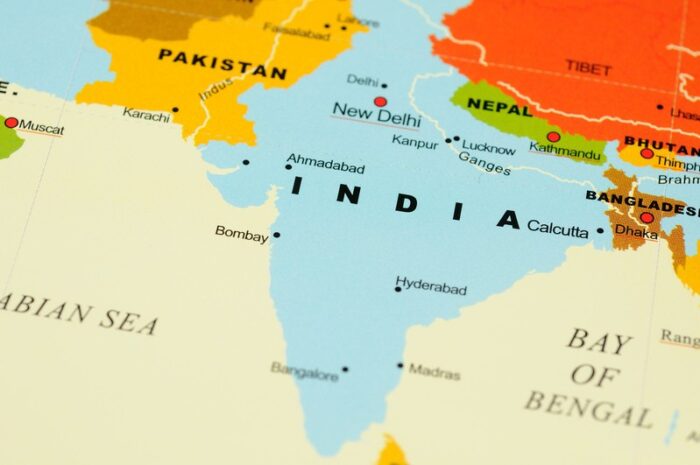Our Terms & Conditions | Our Privacy Policy
India Solar Module Supply Chain updates for Q4 2024
By Chris Crowell
January 20, 2025

As challenges continue to mount for U.S. access to Chinese solar supply chains, attention turns to the India Solar Supply Chain. Sinovoltaics published an updated India Solar Supply Chain Map (SSCM) for Q4 2024 that highlights the rapidly evolving solar manufacturing landscape in India, which includes capacities for modules, cells, wafers, ingots, and polysilicon production.
“India’s solar industry is at the forefront of a transformative era,” said Dricus de Rooij, CEO and co-founder of Sinovoltaics. “The data in this updated map underscores both the ambition and the scale of India’s renewable energy goals, supported by robust policy measures and technological advancements.”
As you’ll see below, India is on the verge of a rapid PV module production expansion. This aligns with the government’s Make in India initiative and Production-Linked Incentive (PLI) schemes, designed to bolster domestic manufacturing and reduce reliance on imports. To further support domestic manufacturing, India has mandated the use of locally made solar cells in clean energy projects starting from June 2026. The law aims to reduce reliance on imports and strengthen the local supply chain in the solar industry
India Solar Supply Chain 2024
The latest SSCM reveals a significant expansion in India’s solar manufacturing ambitions. Gujarat is currently India’s most dominant state for PV manufacturing. The western Indian state hosts the largest number of PV production facilities and drives the nation’s renewable energy-momentum. See map below. Click to expand.

Solar module production: India’s solar module production capacity stands at 58.4 GW, with an additional 60 GW slated for completion by 2030, nearly doubling the total to 119 GW. The map also shows that while Passivated Emitter Rear Contact (PERC) technology dominates India’s current production, the country is shifting toward Tunnel Oxide Passivated Contact (TOPCon) modules, signaling India’s commitment to next-generation efficiency.
Solar cell expansion: The SSCM also reports that current nameplate cell production is at 13.6 GW, but recent announcements indicate a 47.2 GW increase in the coming three to five years for a total of 61.6 GW by 2030.
Ingot expansion: As of the end of 2024, the Indian PV market has four GW of Ingot capacity, but press releases indicate a jump to 28 GW between 2027 and 2030.
Sinovoltaics
Since 2009, Sinovoltaics, a Dutch-German Battery Energy Storage (BESS) and solar photovoltaic (PV) technical compliance and quality assurance service firm, has been a pioneer in the BESS and solar photovoltaic industries. Sinovoltaics’ services include quality assurance inspections, factory audits, Environmental, Social, and Governance (ESG) reports, and traceability audits for utility solar developers and investors.
Aside from Sinovoltaics’ financial stability reports and quarterly supply chain maps, the company is well known for its proprietary AI-based Sinovoltaics EL Mass Analysis (SELMA) software. SELMA enables Sinovoltaics’ quality engineering team to perform 100% inspections, and thus to remove every substandard PV module before it leaves the factory.
Tags: Sinovoltaics
[ad_1]
Images are for reference only.Images and contents gathered automatic from google or 3rd party sources.All rights on the images and contents are with their legal original owners.
[ad_2]



Comments are closed.